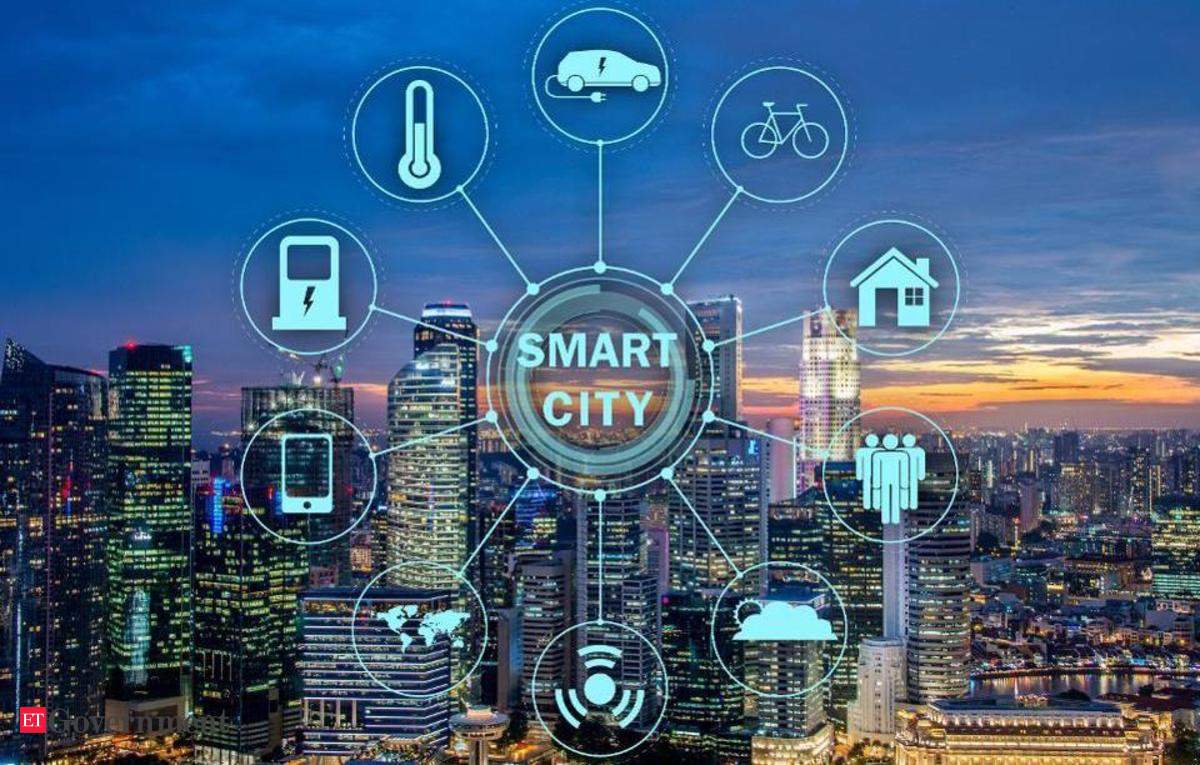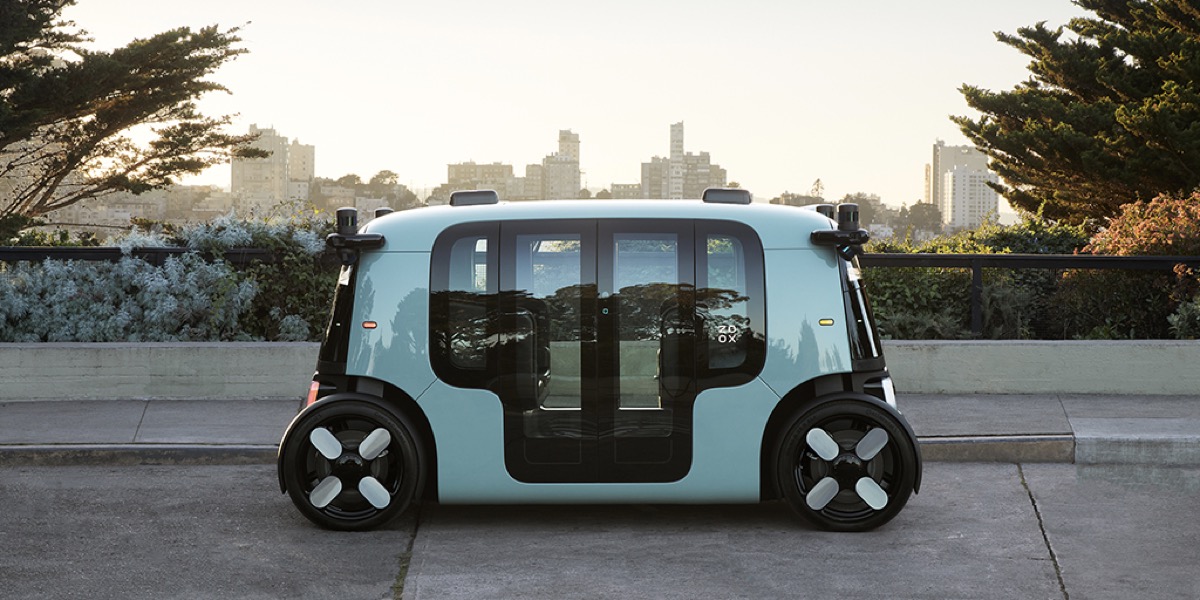User Ideas / Prospects
mechanical engineering has huge contributions Human Health and Biological research and curation in several ways, primarily through the principles of biomechanics, materials science, and manufacturing processes. Here’s how mechanical engineering contributes to the field of tissue engineering:
1. Biomechanics- Understanding Mechanical Properties: Tissue engineering requires knowledge of the mechanical properties of biological tissues, such as elasticity, strength, and viscoelasticity. Mechanical engineers study these properties to design scaffolds and materials that mimic natural tissue behavior.
- Stress-Strain Analysis: Mechanical engineers use stress-strain analysis to understand how engineered tissues will respond to mechanical loads and forces, ensuring that they can function properly in the body.
- Development of Biomaterials: Mechanical engineers play a crucial role in developing and selecting materials that are biocompatible and have the appropriate mechanical properties for tissue engineering applications. This includes materials like hydrogels, biopolymers, and composites.
- Surface Engineering: Mechanical engineers work on modifying the surface properties of biomaterials to enhance cell adhesion, proliferation, and differentiation, which are critical for successful tissue engineering.
- Scaffold Fabrication: Mechanical engineers design and develop advanced manufacturing techniques, such as 3D printing, electrospinning, and bioprinting, to create scaffolds that provide the necessary structure and support for tissue growth.
- Microfabrication: Techniques from microfabrication are used to create intricate and precise structures at the microscale, which are essential for mimicking the complex architecture of natural tissues.
- Computational Modeling: Mechanical engineers use computational models to simulate tissue growth and development, as well as to predict how engineered tissues will interact with the host environment. These models help in optimizing scaffold design and predicting outcomes.
- Finite Element Analysis (FEA): FEA is used to model the mechanical behavior of scaffolds and tissues under various loading conditions, ensuring that they can withstand physiological stresses.
- Nutrient Transport: Mechanical engineers study fluid mechanics to understand and design systems for nutrient transport and waste removal in engineered tissues. This is crucial for maintaining cell viability and function in tissue constructs.
- Bioreactor Design: Mechanical engineers design bioreactors that provide the necessary physical and biochemical environment for tissue growth and maturation. These bioreactors often incorporate fluid flow systems to simulate the in vivo conditions.
- Cell-Matrix Interactions: Mechanical engineers investigate how mechanical forces and the mechanical environment influence cell behavior and tissue development. This field, known as mechanobiology, is essential for designing scaffolds that can direct cell differentiation and tissue formation.
- Bone Tissue Engineering: Mechanical engineers design scaffolds that mimic the mechanical properties of bone and promote osteogenesis. These scaffolds must support load-bearing functions while facilitating the growth of new bone tissue.
- Cardiac Tissue Engineering: Designing constructs that can replicate the mechanical and electrical properties of heart tissue involves understanding the biomechanics of cardiac cells and tissues.
- Cartilage Repair: Scaffolds for cartilage repair need to have the appropriate viscoelastic properties to withstand compressive forces in joints. Mechanical engineers contribute by designing materials and structures that can endure these conditions.
In summary, mechanical engineering provides essential tools, techniques, and knowledge that are crucial for the successful development of engineered tissues. The interdisciplinary collaboration between mechanical engineers and biomedical scientists drives advancements in tissue engineering,
When i did passed out I did perceive that engineer should have
knowledge of his particular faculties all the fundamentals so
he/she/other can solve the problems and make it new level of upgradation.
but still to make it simple and abstract three fields has been
classified as Software,Device/Hardware and Networking.
and all this happen because skills and career option could be simplified as software need more logic and calculation and understanding regarding skill. in hardware/device he/she/other needs to be more accurate with circuits, assembling of ICs and soldering otherwise there will be huge cost in repairing or de-assembling or might be dis-soldering will happen. and in network all needs to know about operations and operations regarding protocols and protocols regarding configuration and configuration regarding tools.
On this level everything looks fine because all of this three fields required of relevant but still not highly dependent knowledge on each other. as software is mostly about programming, hardware/device is mostly about circuits making and networking is all about troubleshooting and configurations.
but what hacks me that how classifications in each of that fields
happen that sounds completely ridiculous are most of computer engineers
are become marketer of specific company or organization or become lazy
professionals that does not have any more passion to learn or spin off
to new or other relevant technologies. or Narrow minded people that just
want to stick with known things and mindset. as In software field now
there are no more software engineers or software developers there are
.net develops or Java developer or PHP developers.
If you have worked on java and you go for .net than in most of firms you will be told that we don't work on Java and we want expert on .net. call you if there any requirement for java.
I know nower days most of firms in India are just a code shop. not driven by true solution oriented or product/service oriented company service ,problem and product lies outside of India and only code is written on their firm more you write code more you get paid. and if any specific code is already stacked by leaving of developer than new developer is needed to continue write that code. and ASAP start to continue. so money flow not get stopped. and that is why more than 86% code is getting written in India but still stay a lot behind in actual engineering.
I think in software industries there is need to understand actual engineering aspect instead of just selling code. and if there will be an approach to give solution to particular audience to provide service/product than there will be the need of specific alter techniques and need of understanding to be explored as Medium to small level software did not need to get distributed on multi-layer architecture so that can be easily deployed on Apache using PHP or ruby and development+learning both will be faster than creation and deployment on JAVA/C#.
And there are lots of API are there to define easier way to complete the project smooth and rapidly. and for content management there is no need to build any project from the scratch. just need to configure the CMS as per requirement.
And this same thing is happening in networking side as well windows server administrator and Redheat server administrator.
And nower days things are getting more worse spring developer and Asp.net devXpress developer or ASP.net mvc developer.
hope that computer engineering still be art of solving through mathematical,logical,Automation,Communication,connectivity and storage and management problems. instead of just making configuration or writing code for some money.
Thanks for Read till the end. share your comments.
The key thing i understand about authority is that. Authority is only exist becouse in organization each and every person have responsibility of one or multiple task and the one who has most experience and who is highly paid for that has more responsibility. and to fullfill his responsibility he need total cooperation of people. and to achive that he has been assigned some level of authorities.
As far as I understand any Tech/Engineering based organization
following department mostly exist in almost all of the organization and
each have their responsibility.
1. Adminstrative/Management/Executive:-
this is exist because each and every organization have their own goal/aim/vision as well as purpose. and people who are members of this department are responsible for defining what must to do and where should now organization flow must go on with spirit.
2. Sales/Marketing with Account:-
this exist because every organization need to define their market/social value to achive their goal/aim/vision and so first what should be product/services`s cost that must be defined and one which class of socity/market this product is going to make impact and how much big ipact this product could do at what level of depth. once this research has been done Sales/Marketing stratagy along with bussiness model should be defined.
3. Tech and Support / Operations.:-
this exist because none of the vision/goal/aim or purpose could be achieved without particular technologies (If tech/engineering based organization) and this is highly special skilled job. so to define new solution strong team of technical people is most necessary thing. so this department is necessary for How or which way goal/purpose/aim or vision is going to get achieved.
so in moderan corporate organization i belief that responsibility has been distributed properly but what making me harsh is how authority has been distributed. all the authorities except recruiting staff based on specialization has been centralized and have in hand of Head of Management/Administrative/Executive department. each and every organization `s any decision that is good for organization`s progress must be passed through management. all the rules and regulation that is good for only one department and bad for other still followed by all department.
and still if any department work is not get done properly than responsible person is Head of that Particular department. I know there will be time of conflict where two department head will be against each other point. but for that management/executive/administrative department just need to be mediator to solve their conflict by defining priority and effectiveness. there is no need to keep all the authority to centralize.
and of course i am not stating here that Head of Administrative/Executive/Management should not have authority to fire or analyze all the department. he/she must have rights for firing any head person of that particular department. but why all the authorities have been centralized for MD/CEO/Executive director or Chairman.
isn't this bureaucrat-ism is hazardous for organization in sense of achieving its goal/vision/aim or purpose.
Hello Readers,
i am writing this because i am feeling now so much passion to writing this story that did make huge impact on my mind this is the story that is also responsible for open my eye about what is engineering exactly and which kind of aspect every engineers should have. write me any feedback that comes to your mind. after reading this.
This is the story about one man who wants to startup his own timber business and looking for some person that do cut some lumber in the forest. and he had two candidate one is Labor with Muscular Physics and another is recently passed out diploma Cutting and Fabrication Engineer with not that much Physical Strength. After taking an interview of both of them. He become confuse that which side he should go for.
because Labor was asking just for 5000 rupees per month and that Engineer was asking for 10,000 rupees per month he did not able to take decision rationally so he decided to hire both of them just for experiment and find conclusion that which side he should go for. and he assign task to both of them to cut the lumber with axe.
1st day labor did cut 7 logs and Engineer did 3 only
2nd day labor did cut 7 logs again and Engineer did 3 only
3rd day labor did cut 6 logs again and Engineer did 4 only
4th day as same as 3rd day
.....
after 14 days passed
15th day labor did cut 3 and Engineer did 7
After getting this shocking reverse observation that businessman did call both of them and ask what happening with them.
Then labor did replied he is doing 3 times more hard work then before but still he can't able to score because his time is not running well, or god is not with his or may be his luck is not with him.
Then he did ask same question to Engineer then he reply that in starting days he become tired early so he was not able to score higher. but then he got practiced so he able to improve his score.
But still confusion of that business man did not cleared so he did switch their axes with each other.
and then both score was near to equal Engineers score was one down then Labor and he said that axe blade was not sharp enough to cut the lumber so he did take long time to make it sharpen by rubbing it between stone. and than that Business man ask same question to the Labor and he replied that he did not instructed to do so.
Then that business man was cleared that if he want more profit with aspect of long time then he should hire Engineers then Labor.
After then engineer did suggest to use Chainsaw with electric motor instead of Axe so he can do better.
So this should be an Aspect of Engineering to upgrade the present situation with more felicities with applying scientific knowledge in progressive direction ( ofcours with limitation that it should not harm an environment i am aware of forest devastation due to timber business and Minamata pollution and etc...).
I am writing this because nower days in India Engineering is just to go college and study subject and passing examinations and score in that for earning degrees instead of Gaining knowledge and apply it for do or create something that matters.
This Story did help me to earning Engineering Aspect I hope it help you to all as well.
Thanks For Reading it Till end.
please share your reviews
Engineering, enterprise, and social impact are interconnected fields that collectively contribute to societal advancement and quality of life. This article explores the relationship between these three domains, illustrating how engineering innovations drive enterprise success and generate significant social impact.
Engineering: The Catalyst for Innovation- Technological Advancements
- Innovation and Development: Engineering is the backbone of technological innovation, leading to the creation of new products, processes, and solutions that address various challenges.
- Example: The development of renewable energy technologies such as solar panels and wind turbines, which help reduce carbon emissions.
- Problem-Solving Approach
- Engineering Mindset: Engineers apply a systematic approach to problem-solving, which is essential for developing efficient and effective solutions in various fields.
- Example: Civil engineers designing resilient infrastructure to withstand natural disasters, thereby enhancing public safety.
- Commercialization of Innovations
- Bringing Ideas to Market: Enterprises play a crucial role in bringing engineering innovations to market, transforming prototypes into commercially viable products and services.
- Example: A startup leveraging biotechnology to develop and market advanced medical diagnostics tools.
- Economic Development
- Job Creation and Wealth Generation: Enterprises that harness engineering advancements contribute to economic development by creating jobs, generating wealth, and stimulating further innovation.
- Example: The rise of the tech industry, driven by engineering innovations, leading to the creation of millions of jobs and significant economic growth.
- Operational Efficiency
- Improving Processes: Enterprises utilize engineering principles to optimize operations, reduce costs, and improve efficiency, enhancing overall business performance.
- Example: Manufacturing companies implementing lean production techniques to minimize waste and increase productivity.
- Addressing Societal Challenges
- Solving Real-World Problems: Engineering-driven enterprises develop solutions that address critical societal challenges, such as access to clean water, healthcare, and education.
- Example: Engineers Without Borders working on projects to provide clean drinking water in developing countries.
- Sustainable Development
- Environmental Stewardship: Engineering innovations contribute to sustainable development by creating eco-friendly technologies and practices that reduce environmental impact.
- Example: The development of electric vehicles to reduce greenhouse gas emissions and dependence on fossil fuels.
- Improving Public Health
- Healthcare Advancements: Engineering plays a pivotal role in advancing healthcare through the development of medical devices, diagnostic tools, and treatment methods.
- Example: The invention of minimally invasive surgical instruments that reduce recovery times and improve patient outcomes.
Image: Surgeons using advanced minimally invasive surgical tools
The Synergistic Relationship- Collaboration and Partnerships
- Interdisciplinary Collaboration: The collaboration between engineers, enterprises, and social organizations leads to the development of holistic solutions that maximize social impact.
- Example: A public-private partnership between tech companies and non-profits to provide internet access in underserved regions.
- Innovation Ecosystem
- Creating an Innovation Ecosystem: The synergy between engineering, enterprise, and social impact fosters an innovation ecosystem where ideas are rapidly developed, commercialized, and scaled to benefit society.
- Example: Innovation hubs and incubators that support startups with engineering backgrounds to develop solutions with significant social impact.
The relationship between engineering, enterprise, and social impact is fundamental to creating a better future. Engineering drives innovation, enterprises harness and commercialize these innovations, and the resulting products and services generate substantial social impact. By fostering collaboration across these domains, we can address pressing global challenges, promote sustainable development, and enhance the quality of life for people worldwide.
Bitcoin, often hailed as the revolutionary digital currency, promised to transform the financial landscape with its decentralized nature and blockchain technology. However, despite its initial promise, Bitcoin has largely failed to become a stable and widely accepted form of currency. Instead, it has morphed into a speculative asset, often likened to gambling. This article explores the reasons behind Bitcoin's failure to fulfill its original vision and its transformation into a speculative instrument.
- Extreme Price Fluctuations
- Volatile Market: Bitcoin's value is highly volatile, with dramatic price swings driven by market sentiment, speculation, and regulatory news. This instability makes it impractical for everyday transactions.
- Example: In 2017, Bitcoin's price skyrocketed from around $1,000 to nearly $20,000, only to crash to around $3,000 in 2018, illustrating its unpredictable nature.

- Lack of Price Stability
- Unpredictable Value: For a currency to be effective, it needs to maintain a stable value. Bitcoin's unpredictable fluctuations deter its use as a reliable medium of exchange or store of value.
- Example: Merchants are reluctant to accept Bitcoin due to the risk of significant value loss between the time of sale and the time they can convert it to fiat currency.
- Lack of Price Stability
- Unpredictable Value: For a currency to be effective, it needs to maintain a stable value. Bitcoin's unpredictable fluctuations deter its use as a reliable medium of exchange or store of value.
- Example: Merchants are reluctant to accept Bitcoin due to the risk of significant value loss between the time of sale and the time they can convert it to fiat currency.
- Legal Issues and Fraud
- Association with Illegal Activities: Bitcoin's anonymity has made it a preferred medium for illegal activities, including money laundering and black market transactions. This association has led to negative perceptions and stricter regulations.
- Example: The notorious Silk Road marketplace, which facilitated illegal drug sales using Bitcoin, highlighted the currency's use in illicit activities.
- Merchant Acceptance
- Low Merchant Adoption: Despite initial enthusiasm, relatively few merchants accept Bitcoin for everyday transactions. This limited acceptance reduces Bitcoin's utility as a currency.
- Example: Major companies like Tesla and Microsoft initially accepted Bitcoin but later reversed their decisions, citing volatility and environmental concerns.
- Transaction Speed and Costs
- Scalability Issues: Bitcoin transactions can be slow and expensive, especially during periods of high demand. This inefficiency makes it less attractive for everyday use compared to traditional payment methods.
- Example: During peak times, Bitcoin transaction fees can skyrocket, and confirmation times can extend to hours, making it impractical for quick purchases.
- Speculative Nature
- Investment Over Use: Bitcoin is primarily viewed as a speculative investment rather than a functional currency. Investors buy Bitcoin hoping its value will increase, rather than to use it for transactions.
- Example: The media frequently covers Bitcoin as an investment opportunity, focusing on potential profits rather than its utility as a currency.
- Market Manipulation
- Influence of Whales: A small number of large holders, or "whales," can significantly impact Bitcoin's price, leading to market manipulation and reinforcing its speculative nature.
- Example: Sudden large transactions by whales can cause significant price movements, further deterring its use as a stable currency.
Bitcoin's journey from a revolutionary digital currency to a speculative asset highlights the challenges it faces in becoming a stable and widely accepted medium of exchange. Its extreme volatility, regulatory hurdles, limited adoption, and speculative nature have hindered its potential to be the new age of currency. Instead, Bitcoin has become more akin to a gambling solution, attracting investors seeking high-risk, high-reward opportunities. For Bitcoin to fulfill its original promise, it must overcome these challenges and achieve greater stability, regulatory clarity, and widespread acceptance.
Engineering is at the heart of innovation and progress, driving advancements that shape our world and improve our quality of life. This article explores the critical role engineering plays in building a better future, touching on various fields and their contributions to societal advancement.
Advancements in Technology- Development of Cutting-Edge Technologies
- Smart Devices and AI: Engineers are at the forefront of developing smart devices and artificial intelligence, revolutionizing how we interact with technology and enhancing productivity.
- Example: The integration of AI in healthcare for early diagnosis and personalized treatment plans.

- Internet of Things (IoT)
- Connected Ecosystems: Engineering has enabled the creation of IoT, where devices communicate with each other, leading to smarter homes, cities, and industries.
- Example: Smart cities using IoT to manage resources efficiently and reduce energy consumption.

- Renewable Energy Solutions
- Green Energy Innovations: Engineers are developing renewable energy technologies such as solar, wind, and hydroelectric power, reducing reliance on fossil fuels and mitigating climate change.
- Example: Large-scale solar farms providing sustainable energy to communities.

- Healthcare Innovations
- Medical Devices and Biotech: Engineers develop advanced medical devices and biotechnology solutions that improve healthcare outcomes and enhance the quality of life.
- Example: Wearable health monitors that track vital signs and provide real-time health data.
- Improved Transportation Systems
- Smart and Sustainable Transport: Engineering innovations in transportation, such as electric vehicles and smart traffic management systems, contribute to safer and more efficient travel.
- Example: Autonomous electric vehicles reducing traffic congestion and pollution.

- Industrial Automation
- Efficiency and Productivity: Engineering in automation and robotics has transformed manufacturing, increasing efficiency, productivity, and safety.
- Example: Automated assembly lines in factories producing goods faster and with higher precision.

- Innovation and Entrepreneurship
- Startups and New Technologies: Engineering fosters a culture of innovation and entrepreneurship, leading to the creation of new technologies and businesses that drive economic growth.
- Example: Tech startups developing innovative solutions to address global challenges.

- Sustainable Infrastructure
- Eco-Friendly Buildings: Engineering principles are applied to design sustainable buildings that use less energy and resources, promoting environmental stewardship.
- Example: Green buildings with energy-efficient systems and sustainable materials.

- Access to Clean Water and Sanitation
- Water Treatment Technologies: Engineers develop technologies for clean water and sanitation, improving health and living conditions in underserved communities.
- Example: Portable water purification systems providing clean drinking water in remote areas.

- Education and Empowerment
- STEM Education: Engineering plays a crucial role in promoting STEM education, empowering the next generation with the skills needed to innovate and solve future challenges.
- Example: Educational programs and workshops inspiring young students to pursue careers in engineering and technology.
Engineering is a driving force behind many of the advancements that shape our world and improve our lives. From developing cutting-edge technologies and promoting sustainable development to enhancing quality of life and driving economic growth, engineering is crucial in building a better future. By continuing to innovate and apply engineering principles, we can address global challenges and create a more sustainable, prosperous, and equitable world.

Engineering thinking is a systematic approach to problem-solving that draws on principles of engineering to address complex issues efficiently and effectively. It involves critical and analytical thinking, creativity, and a structured methodology to design, test, and implement solutions.
Key Components of Engineering Thinking
Problem Identification and Analysis
- Defining the Problem: Clearly identifying the problem to understand its scope and impact.
- Analyzing Requirements: Determining the needs and constraints associated with the problem to guide the solution process.
Research and Data Collection
- Gathering Information: Collecting relevant data and researching existing solutions and technologies.
- Benchmarking: Comparing current solutions to industry standards and best practices to identify areas for improvement.
Idea Generation and Conceptualization
- Brainstorming: Encouraging creative thinking to generate a wide range of potential solutions.
- Concept Development: Refining ideas into feasible concepts that can be further analyzed and tested.
Design and Prototyping
- Detailed Design: Creating detailed plans and specifications for the chosen solution.
- Prototyping: Building prototypes or models to test and refine the design.
Testing and Evaluation
- Testing: Conducting rigorous tests to evaluate the performance and reliability of the solution.
- Analysis and Feedback: Analyzing test results and gathering feedback to make necessary adjustments and improvements.
- Final Production: Transitioning from prototype to final product or solution, ensuring it meets all requirements.
- Deployment: Implementing the solution in the real-world context and monitoring its performance.
Iteration and Continuous Improvement
- Feedback Loop: Continuously collecting feedback and performance data to identify areas for further enhancement.
- Iterative Design: Making iterative improvements to refine and optimize the solution over time.
Applications of Engineering Thinking in Everyday Life
Home Improvement Projects: Using systematic problem-solving to plan and execute home renovations efficiently.
Personal Finance Management: Applying analytical skills to create and maintain budgets, and to make informed investment decisions.
Workplace Efficiency: Implementing engineering principles to streamline workflows, enhance productivity, and foster innovation.
Benefits of Engineering Thinking
Enhanced Problem-Solving Skills: Developing a structured approach to tackle complex issues.
Improved Creativity and Innovation: Encouraging creative thinking and the exploration of diverse solutions.
Better Decision-Making: Making informed decisions based on thorough analysis and testing.
ConclusionEngineering thinking equips individuals with the skills and mindset to approach problems methodically and creatively. Whether in professional settings or everyday life, adopting engineering thinking can lead to more effective solutions and continuous improvement.
Engineering thinking involves systematic problem-solving and critical thinking skills that are invaluable in everyday life. This article explores why these skills are essential for everyone.
Understanding Engineering Thinking
What is Engineering Thinking?: Engineering thinking is a systematic approach to problem-solving that draws on principles of engineering to address complex issues efficiently and effectively. It involves critical and analytical thinking, creativity, and a structured methodology to design, test, and implement solutions.

How Engineering Thinking Helps Individuals Grow and Become Smarter in Life
Engineering thinking is a powerful approach to problem-solving that equips individuals with skills and habits that foster personal growth and intelligence. This article explores how adopting engineering thinking can help individuals become smarter and more capable in various aspects of their lives.
Enhancing Problem-Solving Skills By Systematic Approach to Challenges
Example: When faced with a complex project at work, breaking it down into smaller tasks and systematically tackling each one leads to effective and efficient solutions.

Critical Thinking and Analysis
Example: Analyzing financial statements and market trends before making investment decisions helps in choosing the best options.

Encouraging Creative Solutions
Example: Designing a unique marketing strategy for a new product by combining traditional methods with innovative digital approaches.
Design Thinking
Example: Creating a user-friendly mobile app interface by considering user feedback and design principles.

Learning from Failure
Example: Learning from a failed business venture and using the insights to start a more successful one.
Embracing Iteration and ImprovementBy Continuous Improvement: Engineering thinking involves iterating solutions based on feedback and performance, leading to continuous improvement.
Effective Communication with Clear and Precise Communication: Engineers learn to communicate complex ideas clearly and precisely, a skill that is valuable in any context.
Example: Presenting a well-organized report to stakeholders, clearly explaining the technical details and implications.
Collaborative Teamwork
Team Collaboration: Engineering projects often require collaboration, teaching individuals how to work effectively in teams.
Example: Leading a project team to develop a new product, ensuring that everyone’s expertise is utilized and coordinated.
Curiosity and Continuous Learning
Staying Updated: Engineering thinking fosters a mindset of curiosity and continuous learning, encouraging individuals to stay updated with the latest advancements and knowledge.
Example: Regularly attending workshops and courses to stay informed about the latest developments in one’s field.
Adapting to Technological Changes
Embracing Technology: Understanding engineering principles helps individuals adapt to and leverage new technologies effectively.
Example: Learning to use new software tools to improve productivity and efficiency in daily tasks.
Enterprise Governance and Enterprise Engineering are two complementary disciplines that help organizations achieve their goals and remain competitive in a rapidly changing environment. Here’s why they are important:
Enterprise Governance
1. Strategic Alignment: Ensures that all activities within the organization align with the overall strategy and objectives. This helps in prioritizing initiatives that drive value.
2. Risk Management: Provides a framework to identify, assess, and manage risks that could impact the organization’s ability to achieve its goals.
3. Accountability and Transparency: Establishes clear roles, responsibilities, and reporting structures, promoting accountability and transparency within the organization.
4. Performance Measurement: Implements mechanisms to monitor and measure performance against set goals, enabling continuous improvement and informed decision-making.
5. Regulatory Compliance: Ensures that the organization adheres to laws, regulations, and standards, thereby avoiding legal issues and penalties.
Enterprise Engineering1. Process Optimization: Focuses on designing and improving business processes to increase efficiency and effectiveness, thereby reducing costs and enhancing quality.
2. Innovation and Adaptation: Facilitates the development of new products, services, and business models, allowing the organization to adapt to market changes and technological advancements.
3. System Integration: Ensures that different systems within the organization work together seamlessly, improving data flow and operational efficiency.
4. Organizational Design: Helps in structuring the organization in a way that supports its strategy and operations, including defining roles, responsibilities, and workflows.
5. Change Management: Provides tools and methodologies to manage organizational change effectively, ensuring smooth transitions and minimizing disruptions.
When combined, these disciplines ensure that the organization not only has a clear direction and a framework for accountability (Governance) but also possesses the tools and processes needed to operate efficiently and innovate continuously (Engineering). This synergy helps organizations remain resilient, competitive, and capable of sustained growth.

